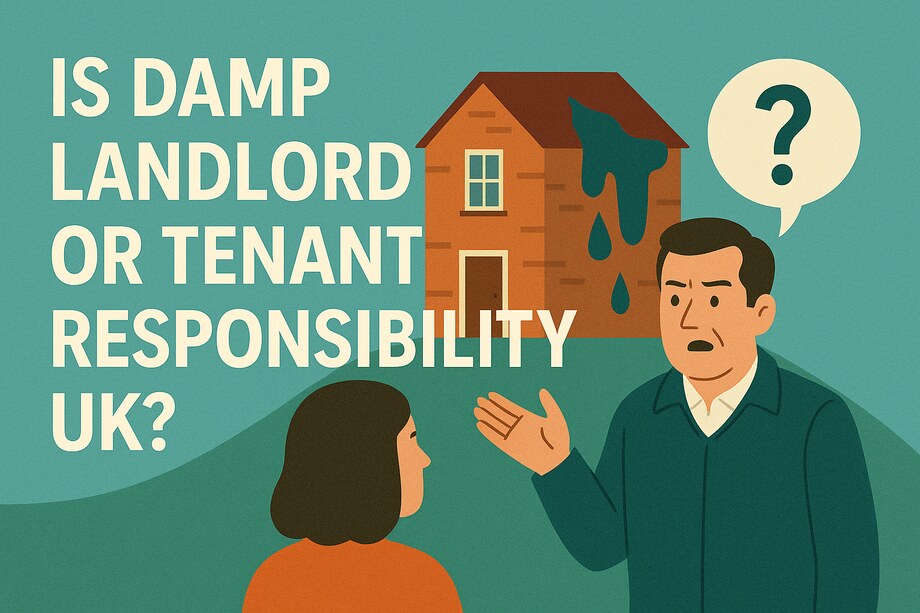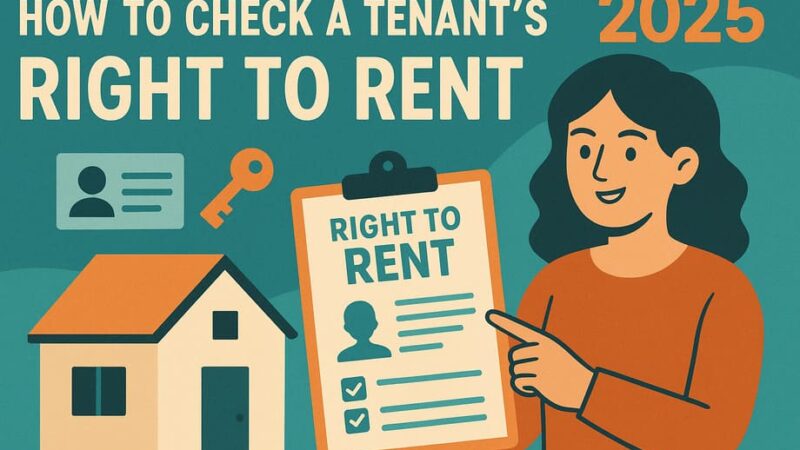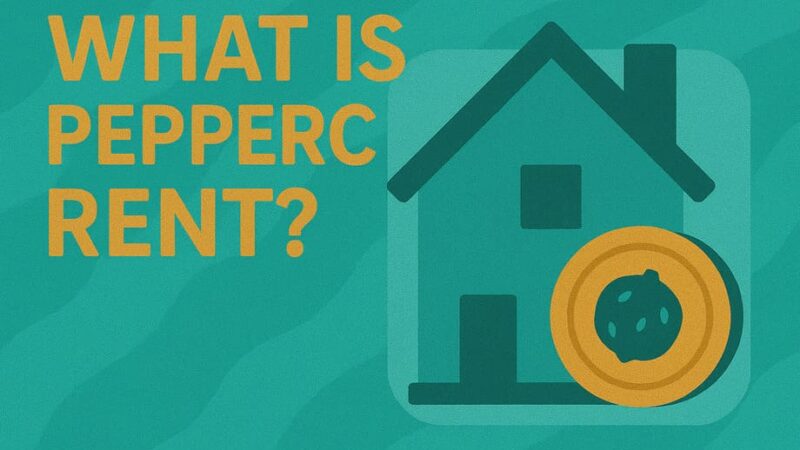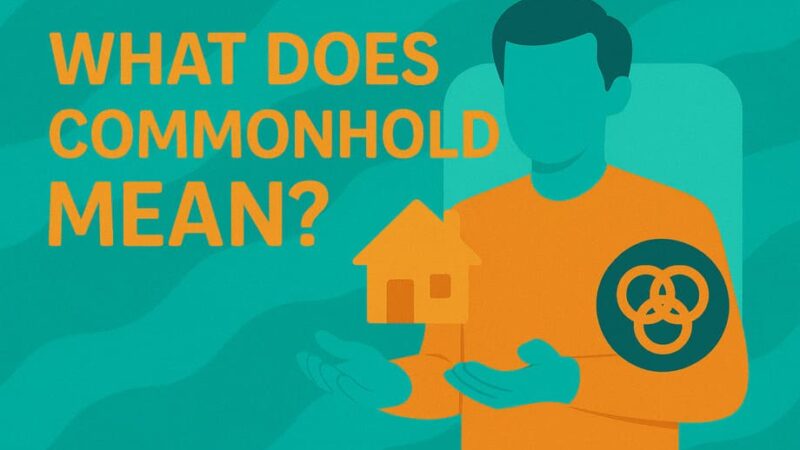Is Damp Landlord or Tenant Responsibility UK: Complete Legal Guide 2025

Damp and mould issues in rental properties remain one of the most common disputes between landlords and tenants in the UK. With recent legislative changes and updated government guidance emphasizing landlord responsibility, understanding who is legally responsible for different types of damp has become crucial for both parties. This comprehensive guide explains the current legal framework, responsibilities, and practical solutions for addressing damp problems in rental properties.
The Current Legal Framework: What Changed in 2023-2024
Government Guidance Clarifies Responsibility
In September 2023, the Department for Levelling Up, Housing and Communities (DLUHC) published updated guidance that fundamentally shifted the approach to damp and mould responsibility. This new guidance states: “landlords must treat cases of damp and mould with the utmost seriousness and act promptly to protect their tenants’ health…..Damp and mould in the home are not the result of ‘lifestyle choices’, and it is the responsibility of landlords to identify and address the underlying causes of the problem, such as structural issues or inadequate ventilation.”
Key Legal Principle: No More “Lifestyle Choice” Blame
The government guidance is absolutely clear that it is totally unreasonable to blame damp and mould in the home on ‘lifestyle choices’. It is unavoidable that everyday tasks, such as cooking, bathing, washing and drying laundry will contribute to the production of indoor moisture. This represents a significant shift away from previous approaches that often blamed tenants for damp problems.
Primary Landlord Responsibilities Under UK Law
Section 11 of the Landlord and Tenant Act 1985
Section 11 of the Landlord and Tenant Act 1985 states that a landlord must keep in repair the structure and exterior of the property. A landlord must also keep in repair and proper working order the installations in the property that supply water, gas, electricity, and heating.
When damp and mould problems are caused by issues with these areas, landlords are legally responsible for repairs. This includes:
- Structural problems affecting the building’s integrity
- Exterior maintenance including roofs, walls, and foundations
- Heating systems that are inadequate or faulty
- Ventilation installations that aren’t working properly
- Plumbing issues causing leaks or moisture problems
The Homes (Fitness for Human Habitation) Act 2018
This legislation requires that rental properties must be fit for human habitation at the start of and throughout the tenancy. Damp and mould problems that make a property unfit for habitation are clearly the landlord’s responsibility to address.
Housing Health and Safety Rating System (HHSRS)
The Housing Health and Safety Rating System (HHSRS) is used by local authorities to assess the risk (the likelihood and severity) of a hazard in residential housing to the health and safety of occupants or visitors. Damp and mould growth is a defined hazard.
Understanding Different Types of Damp and Responsibility
1. Rising Damp – Always Landlord Responsibility
Rising damp happens when moisture travels up from the ground through the masonry to the height of about one metre. Rising damp is more common in older properties. It generally affects the lower part of the ground floor of a property up to the height of about 1 metre.
Landlord’s Obligations:
- Repair or install damp-proof courses (DPC)
- Address structural problems causing rising damp
- Replace damaged materials affected by rising damp
- Investigate and resolve underlying causes
Why It’s Always Landlord Responsibility: Rising damp is a structural issue that tenants cannot cause or prevent through their behavior. It requires professional intervention and structural repairs.
2. Penetrating Damp – Landlord Responsibility
Penetrating damp happens when water penetrates into the fabric of a building from outside to inside, for example, because of a leaking downpipe.
Common Causes (All Landlord Responsibility):
- Leaking roofs or damaged tiles
- Faulty guttering or downpipes
- Cracked external walls or pointing
- Damaged window frames or seals
- Blocked drainage systems
Landlord’s Legal Obligations:
- Maintain the exterior structure of the property
- Repair leaks and structural defects promptly
- Replace damaged building materials
- Ensure proper external waterproofing
3. Condensation Damp – Shared Responsibility with Landlord Priority
Condensation damp is the most complex area of responsibility, but recent guidance has clarified that landlords bear primary responsibility for providing adequate solutions.
When Landlords Are Responsible for Condensation: Your landlord will probably be responsible for dealing with condensation damp if: your tenancy agreement says they’re responsible – or it says they will keep your home “fit to live in” or something similar; the damp was caused by your landlord not making certain repairs to your home – for example, not fixing the heating or ventilation; the damp has caused damage to your home that your landlord has to repair – for example, if it’s caused window frames to rot or damaged plasterwork.
Specific Landlord Obligations for Condensation:
- Install adequate ventilation systems in kitchens and bathrooms
- Ensure heating systems are effective and economical to run
- Provide proper insulation to prevent cold surfaces
- Install extractor fans where needed
- Address structural ventilation problems
Tenant Responsibilities and Reasonable Expectations
What Tenants Must Do
A tenant can reduce the risk of damp and mould by: allowing ventilation by opening windows and using extractor fans where provided; keeping furniture away from walls to allow air to circulate around the room more easily.
Reasonable Tenant Obligations:
- Use provided heating and ventilation systems appropriately
- Open windows periodically for air circulation
- Report damp problems promptly to landlords
- Avoid blocking air vents or extractor fans
- Use extractor fans during cooking and bathing
- Keep furniture slightly away from external walls
What Tenants Are NOT Responsible For
Although it is the landlord’s responsibility to ensure that the house can be heated efficiently, it is your responsibility as a tenant to ensure that this is maintained on a day-to-day basis. However, tenants should not be expected to:
- Pay excessive heating costs due to poor insulation
- Accept inadequate ventilation systems
- Deal with structural damp problems
- Live in properties that cannot be adequately heated
- Solve condensation problems caused by building defects
The “Lifestyle Choice” Myth: Why It’s Now Rejected
Government Position on Normal Living Activities
The fundamental cause of damp and mould will be due to building deficiencies, inadequate ventilation, inadequate heating and/or poor energy efficiency, not tenants’ normal domestic activities.
Normal Activities That Produce Moisture:
- Cooking and food preparation
- Bathing and personal hygiene
- Washing and drying clothes
- Breathing and normal occupation
- Cleaning and housework
Cost of Living Considerations
Cost of living pressures may mean that tenants struggle to adequately heat their homes or heat them irregularly. This can lead to increased condensation and damp. Try to understand tenants’ circumstances and consider signposting them to support with their energy costs.
Landlords cannot reasonably expect tenants to maintain expensive heating regimes if properties are poorly insulated or have inadequate heating systems.
Practical Steps for Landlords
Immediate Response Requirements
Once the problem has been reported, the landlord has to respond within 14 days. For landlords, when a tenant reports mould in the property, arrange an inspection to determine the cause of the mould and, where necessary, ensure repairs are made.
14-Day Response Framework:
- Acknowledge receipt of the tenant’s damp report
- Arrange professional inspection to determine the cause
- Develop action plan for addressing identified issues
- Provide timeline for completion of works
- Arrange temporary measures if needed for tenant safety
Proactive Prevention Measures
Structural Improvements:
- Install mechanical ventilation systems (MEV or PIV)
- Upgrade heating systems for efficiency and effectiveness
- Improve insulation to reduce cold surfaces
- Install humidity-controlled extractor fans
- Address any building fabric issues
Regular Maintenance: Landlords should periodically check properties for damp and mould, and for any risk factors such as inadequate ventilation and condensation. Landlords should also adopt a ‘making every contact count’ approach to identifying damp and mould.
Tenant Rights and Legal Remedies
Reporting Damp Problems
A tenant experiencing damp and mould problems in their home should report the problems to their landlord. If their landlord does not resolve the issue, a tenant might need to take further steps to resolve their problem.
Documentation Requirements:
- Take photographs of all affected areas
- Keep records of when problems were first noticed
- Document all communications with landlords
- Record any health impacts on occupants
- Obtain professional survey reports if possible
Available Legal Remedies
Local Authority Involvement: A tenant of a private landlord or housing association experiencing damp and mould problems could report the issue to their local authority environmental health department.
Court Action Options:
- Claims for breach of repair obligations under Section 11
- Applications under the Homes (Fitness for Human Habitation) Act
- Statutory nuisance claims under Environmental Protection Act 1990
- Compensation claims for damaged belongings or health impacts
Protection from Retaliatory Eviction
Some landlords take steps to evict tenants who ask for repairs. This is called revenge eviction. Sometimes you can stop this. Tenants have legal protections against retaliatory eviction when they report legitimate repair issues.
Professional Assessment and Evidence
When to Obtain Professional Surveys
A surveyor’s report can be used as evidence of the cause of the damp and mould problem. Identifying the cause can help to establish whether the landlord is responsible and what works are needed to correct the problem.
Types of Professional Assessment:
- Damp surveys using moisture meters and thermal imaging
- Structural surveys for building defect identification
- Ventilation assessments for airflow analysis
- Mould testing for health risk evaluation
- Energy efficiency assessments
Building Evidence for Legal Action
Essential Documentation:
- Professional survey reports identifying damp causes
- Photographs showing progression of problems over time
- Medical reports if health is affected
- Records of landlord communications and responses
- Evidence of reasonable tenant behavior and maintenance
Health Implications and Urgent Action
When Damp Becomes a Health Emergency
Where landlords have been made aware of these vulnerabilities, and especially if they are aware that the damp and mould is having an effect on health, landlords must ensure occupants are not left living with the damp and mould.
Health Risks Requiring Immediate Action:
- Respiratory problems, especially in children or vulnerable adults
- Allergic reactions or asthma exacerbation
- Persistent coughs or breathing difficulties
- Skin irritation or infections
- Mental health impacts from living conditions
Temporary Accommodation Obligations
When a concern has been raised about tenant health (either by the tenant or a third party), landlords should consider whether tenants can be offered suitable alternative accommodation, subject to the tenant’s agreement, while the damp and mould is rectified.
Financial Responsibilities and Costs
Landlord’s Financial Obligations
Repair and Remediation Costs:
- Professional damp surveys and assessments
- Structural repairs and improvements
- Installation of ventilation systems
- Replacement of damaged materials and decoration
- Temporary accommodation costs if required
Cannot Be Charged to Tenants:
- Costs of addressing structural damp problems
- Installation of adequate heating or ventilation
- Repairs to building fabric or exterior
- Professional cleaning of mould caused by building defects
Tenant’s Limited Financial Exposure
Tenants are only responsible for costs when:
- They have deliberately caused damage beyond normal wear and tear
- They have failed to use provided systems appropriately after proper instruction
- Damage results from negligent behavior clearly outside normal domestic use
Insurance and Legal Protection
Landlord Insurance Considerations
Usually Covered:
- Sudden escape of water causing penetrating damp
- Storm damage leading to damp problems
- Accidental damage to heating or plumbing systems
Usually Excluded:
- Gradual deterioration and maintenance issues
- Condensation problems from inadequate ventilation
- Costs of improving energy efficiency or ventilation
Legal Expenses and Support
For Tenants:
- Legal aid may be available for serious health and safety issues
- Citizens Advice can provide free initial guidance
- Shelter offers specialized housing advice and representation
- No-win-no-fee arrangements may be available
For Landlords:
- Professional indemnity insurance for survey costs
- Legal expenses insurance for defending claims
- Property management services for compliance support
Regional Variations and Special Circumstances
Scotland and Wales Differences
While the principles are similar across the UK, specific legislation and enforcement may vary:
- Scotland: Additional protections under the Housing (Scotland) Act
- Wales: Renting Homes (Wales) Act provides specific damp and mould provisions
- Northern Ireland: Housing Executive guidance on damp responsibilities
Special Property Types
Listed Buildings:
- Conservation restrictions may limit improvement options
- Landlords must still ensure fitness for habitation
- Professional heritage advice may be required
Older Properties:
- Higher likelihood of structural damp issues
- May require more extensive improvement works
- Cannot use age as excuse for inadequate conditions
Best Practices for Preventing Disputes
For Landlords
Proactive Management:
- Conduct regular property inspections for early damp detection
- Invest in adequate ventilation systems before problems arise
- Provide clear tenant guidance on heating and ventilation use
- Respond promptly to any tenant reports of dampness
- Document all maintenance and improvement works
For Tenants
Responsible Tenancy:
- Report problems early before they become serious
- Follow provided guidance on heating and ventilation
- Document all issues with photographs and dates
- Maintain good communication with landlords
- Seek professional advice if problems persist
Future Legislative Developments
Awaab’s Law Implementation
The UK government has introduced Awaab’s Law, set to take effect from October 2025, which will:
- Strengthen landlord obligations for damp and mould remediation
- Introduce stricter timescales for addressing reported problems
- Increase penalties for non-compliance
- Enhance tenant protection against health hazards
Energy Efficiency Requirements
Ongoing developments in minimum energy efficiency standards will:
- Reduce condensation risks through better insulation
- Require more effective heating systems
- Mandate improved ventilation in many properties
- Create clearer links between energy efficiency and damp prevention
Conclusion
The legal position on damp responsibility in UK rental properties has become increasingly clear: landlords bear primary responsibility for ensuring properties are free from damp and mould problems. The 2023 government guidance explicitly rejects the “lifestyle choice” narrative and places the onus on landlords to identify and address underlying causes.
While tenants retain some responsibility for reasonable day-to-day care of properties, they cannot be blamed for damp problems that result from structural issues, inadequate heating or ventilation, or building defects. The law recognizes that normal domestic activities inevitably produce moisture, and properties must be designed and maintained to cope with this reality.
For landlords, the message is clear: invest in proper ventilation, heating, and building maintenance to prevent damp problems occurring. When problems are reported, respond quickly with professional assessment and appropriate remedial action. The costs of prevention and early intervention are typically far lower than the potential legal and repair costs of ignoring damp issues.
For tenants, understanding your rights empowers you to demand appropriate living conditions. While you should use heating and ventilation systems responsibly and report problems promptly, you are not responsible for solving structural damp problems or accepting inadequate living conditions due to poor building design or maintenance.
The emphasis on landlord responsibility reflects the fundamental principle that rental properties must be fit for human habitation. With health implications potentially serious and legal consequences for non-compliance increasing, both parties benefit from understanding their obligations and working together to maintain healthy, damp-free homes.
Last Updated on August 21, 2025 by James Cartwright







